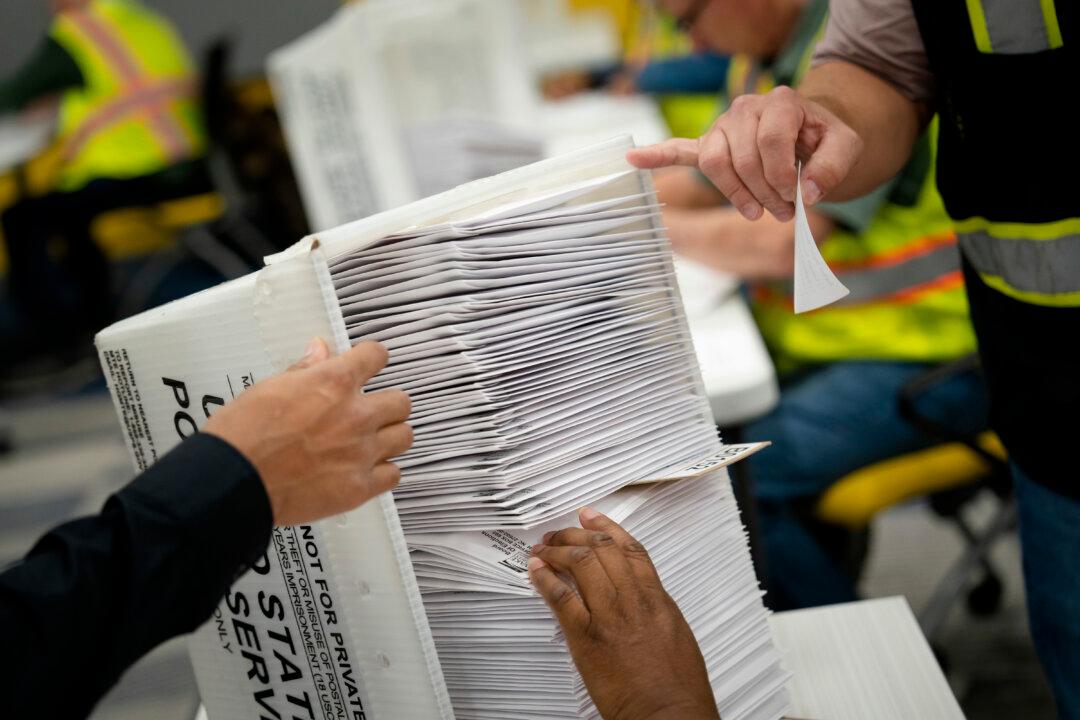A North Carolina mother revealed the heartbreak of watching both her 5-year-old son and boyfriend drown in the ocean.
“[Porter] decided we’re going to take Liam out to swim,” she said. “And when I say swim I mean stand in the water. Liam wasn’t old enough or big enough to be swimming at this point.”
A man walking by noticed that they were being carried further and further out, she said. He said she needed to call 911 right away.
“I had eyes on Austin and Liam—I didn’t realize that anything was even wrong,” she told the magazine.
Peoples said she watched Potter grab Liam before hoisting him over his head in the air out of the water.
“Liam was his buddy. He wasn’t going to let anything happen to him,” she told the publication, adding that he held “for as long as he could.”
“He did what he could for as long as he could. They never went under. As waves crash and thrash you go under. But I was able to see them the whole time. The whole time. I just kept watching and making sure I could see two,” she said.
The Atlantic Beach Fire Department arrived on the scene in only a few minutes.
Mike Simpson, the fire chief, got on a jet ski and pulled both out of the water, but he was too late.
“It’s very unfortunate, but we’ve had a rash of them down here over the last month—I think there’s been a total of seven [drownings] along our beaches, which is more than we’ve had in the previous three seasons,” Atlantic Beach Chief of Police Jeff Harvey told People. “The thing is, they’re always out there. Rip currents are always there. It’s just unfortunate people get caught in them and are not able to get out.”
The hardest part for Peoples was having to tell Potter’s 9-year-old brother that he wasn’t coming home.
“I think that was probably one of the most heartbreaking amongst everything else is having to come home telling him his best friend wouldn’t be coming home,” she told ABC11.

“Sometimes you can spot a rip current because it can look darker than surrounding waters. Another sign is an area where waves do not break, with breaking waves on either side. You can sometimes see water, or seaweed, moving away from the beach,” the Weather Channel says, but it adds that they are hard to spot.
They’re also strongest during low tide and stronger currents are likely to occur with strong winds.
- Disturbing Video: Fishermen Cut Off Shark’s Tail, Release It Back Into Ocean
- Texas Explorer Sets World’s Deepest Dive Record and Finds Plastic Trash at Ocean Bottom
- Adidas Sold 1 Million Eco-Friendly Shoes Made From Ocean Plastic, Plans 11 Million More
- Dutchman Invents System to Clean Plastic from Ocean, Says It Could Clear 1/2 Ocean Plastic in 5 Years
- Uncharted Waters: Scientists To Explore Indian Ocean Depths
Beaches usually have flags, and a green flag means low risk, a yellow flag means moderate risk, and a red flag means that strong rip currents are expected.
Harvey warned people vacationing at the beach to look for rip currents and wear life jackets
“It takes one second,” Harvey added. “You’ve got to be careful.”





